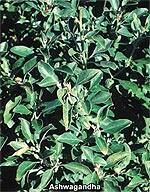Life Extension Magazine®
Most of us have witnessed the adverse cosmetic impact on the face caused by just one night of sleep deprivation. A person may look a decade older in response to stress-induced changes in facial tissues that often accompany insomnia. Few people are aware, however, that chronic insomnia inflicts significant damage to skin tissues that range from premature aging1,2 to disorders like eczema, psoriasis, and atopic dermatitis.3-6 As you will read, there are natural approaches that can help you get a full night’s sleep and enjoy refreshed, healthy-looking skin. To maintain healthy, youthful-looking skin, most experts recommend you get at least 7 to 8 hours of restful sleep each night. In today’s hectic, stressed-out world, that’s difficult for most people to do, with a heavy toll taken on skin health and overall health as a result. Recent studies validate milk peptides’ capacity to restore more restful sleep patterns while enhancing daytime performance and cognition. Numerous studies have established that stress-induced sleep debt (insomnia) can dramatically impair skin function and integrity.7-11 In addition to inducing such inflammatory skin conditions as eczema and psoriasis,3,6,12 sleep deprivation can exacerbate both allergic and irritant contact dermatitis.4,5 Regrettably, many victims of these sleep debt–related health conditions don’t take the right action to treat them because they (and their doctors) don’t recognize the real source of their problem. Poor sleep quality often accompanies normal aging. Fortunately, scientists have identified some of the underlying mechanisms that interfere with healthy sleep patterns as humans mature. For instance, insufficient or poor-quality sleep has been associated with elevated stress-hormone (cortisol) levels13,14 and increased mortality from all causes.15-18
A decline in the body’s melatonin production is a well known underlying factor for sleep problems in older adults. This is often accompanied by other health conditions.19 Collagen, one of the skin’s primary components, plays a key role in its structure and integrity—and healthy elasticity and youthful appearance. Sleep deficit can affect the optimal process of the skin’s collagen formation. A crucial function of the skin is to maintain a barrier that prevents excessive water loss and blocks entry of toxic foreign substances. The cascade of events that occurs during the process of collagen formation is highly dependent on immune synchronization that is initiated during restful nights of sleep.11,20-22 Insidious Link Between Sleep Debt and Skin AgingNumerous studies have established that stress-induced insomnia can dramatically impair skin function and precipitate numerous skin disorders.7-11 Sleep researchers have found that animals subjected to prolonged sleep deprivation develop ulcerous lesions on their legs and suffer increased risk of bacterial invasion through the skin owing to a breakdown in skin membrane integrity.23-27 In humans, sleep debt and stress have been definitively linked to skin disorders—so much so that an entire sub-specialty of dermatology has developed over the past two decades called psychodermatology. It emerged after an abundance of published studies revealed that many skin conditions respond well to antidepressants and anti-anxiety medications, in addition to traditional dermatologic interventions.28-30 Scientists attribute the link between chronic insomnia and skin disorders to the immunomodulatory or immune-altering effects induced by the release of excess glucocorticoids triggered by sleep debt and stress. As the name suggests, this class of hormones regulates the metabolism of glucose. Every cell in the human body possesses receptors for glucocorticoids. Glucocorticoids also happen to play a central role in immune function. (Cortisol is the most important of the glucocorticoids.) Excess glucocorticoid production has been shown to negatively affect nearly every tissue in the body and accelerate the aging process.31 In terms of skin health, the sequence of events involved in the formation of collagen is highly dependent on the immune-balancing processes initiated during restful nights of sleep.7,20-22 As the major structural component of your skin (and other bodily tissues), collagen protects against UV damage and bacterial infection, maintains your skin’s elasticity, seals in moisture, and preserves its youthful, healthy appearance. This nighttime balancing process is disrupted in the presence of excess glucocorticoids (cortisol in particular). Sleeplessness ultimately has a cumulative immunosuppressant effect. Of particular significance for skin health are reduced levels of interleukin-1 (IL-1) observed in insomnia sufferers. At healthy levels, this protein triggers increased white blood cell production in response to foreign invaders and plays a central role in the production of collagen.7 When levels of IL-1 are too low, collagen formation deteriorates. This is how chronic insomnia can cause skin disorders related to immune dysfunction. In addition to inducing such inflammatory skin conditions as eczema and psoriasis,3,6,12 sleep deprivation has been shown to exacerbate both allergic and irritant contact dermatitis.4,5 As you learned in the previous article, bioactive milk peptides significantly reduce stress-induced elevations in cortisol and have been demonstrated in human clinical studies to promote sustained and restful sleep patterns. They operate along the same neurological pathways as benzodiazepines without the side effects associated with long-term benzodiazepene use.
Nutrients to Enhance Skin Health While You SleepStudies have shown that Indian gooseberry and ashwagandha—medicinal herbs used for thousands of years by Ayurvedic practitioners—promote healthy skin function and appearance.32-35 Indian gooseberry has been shown to exert broad-spectrum antioxidant activity in the skin and to protect the skin from the damaging effects of free radicals.36 For these reasons, Indian gooseberry has been used variously for dermal wound healing,37 skin carcinogenesis protection,38,39 preventing photoaging,40 and in general-purpose skin care products.32 In one study, a proprietary combination containing Indian gooseberry and ashwagandha extracts demonstrated a 54% inhibition of enzymes that break down collagen and an 86% inhibition of those that break down hyaluronic acid, the skin’s natural moisturizer.41 This proprietary combination was shown to prevent free-radical damage to the skin and to rejuvenate skin cells by increasing circulation of oxygen and nutrients through a reduction in stress hormones known to exert destructive effects on the skin.
Ashwagandha has also been shown to protect the skin against the effects of stress, especially in stress-related health conditions. In a randomized, double-blind, placebo-controlled trial, 98 chronically stressed adults were assigned to receive a patented standardized extract of ashwagandha for 60 days. Study participants received either 125 mg once or twice a day, 250 mg twice a day, or a placebo.42 All groups taking ashwagandha saw significant reductions in their stress and anxiety levels and blood pressure. The group receiving 125 mg once a day had a 62% reduction in anxiety compared to those taking the placebo, with anxiety scores declining even further in the group taking 250 mg twice daily. The group receiving the daily dose of 125 mg showed a 14.5% reduction in cortisol levels and a 13.2% increase in DHEA, with the group taking 250 mg twice a day reporting significantly greater benefits.42 All treatment groups taking ashwagandha experienced a decline in blood levels of C-reactive protein (CRP), a marker of inflammation in the body. The study’s authors concluded that the “Daily use of Withania somnifera [ashwagandha] would benefit people suffering from the effects of stress and anxiety without any adverse effects.”42 The Sleep HormoneMelatonin is the primary sleep hormone produced nocturnally by the pineal gland in a process driven by a “biological clock” located in the suprachiasmatic nucleus.43 Melatonin promotes sleep in humans44,45 by acting as an endogenous regulator of the sleep-wake cycle.46,47 The body’s own melatonin levels decrease with age, presumably due to a decline in circadian rhythmic functions or to a gradual decline in function of the pineal gland.48-51 It is widely accepted that internally produced melatonin promotes sleep and stabilizes the human sleep-wake cycle. Thus, a decline in melatonin levels due to aging may contribute to the common complaint of poor sleep quality seen in the elderly.52 This suggests the possibility of improving sleep in aging people suffering from insomnia by appropriately timed treatment with melatonin.
Controlled-release melatonin, a formulation that releases melatonin gradually in the gastrointestinal tract following oral administration, has proven effective for the short-term treatment of adults aged 55 years and older who suffer from primary insomnia.53-57 It is considered effective enough that controlled-release melatonin has been licensed since June 2007 in Europe and in other countries for the short-term treatment of primary insomnia.58 SummaryOver 30% of Americans suffer from chronic insomnia, while approximately 60 million experience problems falling asleep in a given year. Few people understand the profoundly negative effect of chronic insomnia on skin health. Scientists have uncovered how excess cortisol and certain immune-signaling imbalances can negatively impact both sleep and skin health. By attacking these underlying factors, bioactive milk peptides and other nutrients may protect against various skin disorders, preserve youthful skin appearance, and facilitate more refreshing sleep patterns. If you have any questions on the scientific content of this article, please call a Life Extension® Health Advisor at | |||||||||
| References | |||||||||
| 1. Rööst M, Nilsson P. Sleep disorders—a public health problem. Potential risk factor in the development of type 2 diabetes, hypertension, dyslipidemia and premature aging. Lakartidningen. 2002 Jan 17;99(3):154-7. 2. Edwards BA, O’Driscoll DM, Ali A, Jordan AS, Trinder J, Malhotra A. Aging and sleep: physiology and pathophysiology. Semin Respir Crit Care Med. 2010 Oct;31(5):618-33. 3. Altemus M, Rao B, Dhabhar FS, Ding W, Granstein RD. Stress-induced changes in skin barrier function in healthy women. J Invest Dermatol. 2001 Aug;117(2):309-17. 4. Kobayashi S, Hayashi K, Koyama S, et al. Actigraphy for the assessment of sleep quality in pediatric atopic dermatitis patients. Arerugi. 2010 Jun;59(6):706-15. 5. Hanifin JM, Reed ML; Eczema Prevalence and Impact Working Group. A population-based survey of eczema prevalence in the United States. Dermatitis. 2007 Jun;18(2):82-91. 6. Choi EH, Brown BE, Crumrine D, et al. Mechanisms by which psychologic stress alters cutaneous permeability barrier homeostasis and stratum corneum integrity. J Invest Dermatol. 2005 Mar;124(3):587-95. 7. Kahan V, Andersen ML, Tomimori J, Tufik S. Can poor sleep affect skin integrity? Med Hypotheses. 2010 Dec;75(6):535-7. 8. Ghadially R, Brown BE, Sequeira-Martin SM, Feingold KR, Elias PM. The aged epidermal permeability barrier. Structural, functional, and lipid biochemical abnormalities in humans and a senescent murine model. J Clin Invest. 1995 May;95(5):2281-90. 9. Gupta MA, Gupta AK. Psychodermatology: an update. J Am Acad Dermatol. 1996 Jun;34(6):1030-46. 10. Tausk FA, Nousari H. Stress and the skin. Arch Dermatol. 2001 Jan;137(1):78-82. 11. Grice KA. Transepidermal water loss in pathologic skin. In: Jarrett A (ed.). The Physiology and Pathophysiology of the Skin. London: Academic Press; 1980:2147-55. 12. Rostenberg A Jr. The role of psychogenic factors in skin diseases. Arch Dermatol. 1960 Jan;81:81-6. 13. Weissman MM, Greenwald S, Niño-Murcia G, Dement WC. The morbidity of insomnia uncomplicated by psychiatric disorders. Gen Hosp Psychiatry. 1997 Jul;19(4):245-50. 14. Leproult R, Copinschi G, Buxton O, Van Cauter E. Sleep loss results in an elevation of cortisol levels the next evening. Sleep. 1997 Oct;20(10):865-70. 15. Grandner MA, Hale L, Moore M, Patel NP. Mortality associated with short sleep duration: The evidence, the possible mechanisms, and the future. Sleep Med Rev. 2010 Jun;14(3):191-203. 16. Wingard DL, Berkman LF. Mortality risk associated with sleeping patterns among adults. Sleep. 1983;6(2):102-7. 17. Lavie P, Herer P, Peled R, et al. Mortality in sleep apnea patients: a multivariate analysis of risk factors. Sleep. 1995 Apr;18(3):149-57. 18. Punjabi NM, Caffo BS, Goodwin JL, et al. Sleep-disordered breathing and mortality: a prospective cohort study. PLoS Med. 2009 Aug;6(8):e1000132. 19. Monjan AA. Perspective on sleep and aging. Front Neurol. 2010 Sep 28;1:124. 20. Opp MR. Cytokines and sleep. Sleep Med Rev. 2005 Oct;9(5):355-64. 21. Kapsimalis F, Richardson G, Opp MR, Kryger M. Cytokines and normal sleep. Curr Opin Pulm Med. 2005 Nov;11(6):481-4. 22. Imeri L, Opp MR. How (and why) the immune system makes us sleep. Nat Rev Neurosci. 2009;10(3):199-210. 23. Everson CA, Toth LA. Systemic bacterial invasion induced by sleep deprivation. Am J Physiol Regul Integr Comp Physiol. 2000 Apr;278(4):R905–16. 24. Gilliland MA, Bergmann BM, Rechtschaffen A. Sleep deprivation in the rat: VIII. High EEG amplitude sleep deprivation. Sleep. 1989 Feb 12;12(1):53–9. 25. Kushida CA, Everson CA, Suthipinittharm P, et al. Sleep deprivation in the rat: VI. Skin changes. Sleep. 1989 Feb;12(1):42–6. 26. Rechtschaffen A, Bergmann BM. Sleep deprivation in the rat by the disk-over- water method. Behav Brain Res. 1995 Jul-Aug;69(1-2):55–63. 27. Shukla R, Sasseville D. Psychopharmacology in psychodermatology. J Cutan Med Surg. 2008 Nov-Dec;12(6):255-67. 28. Buljan D, Buljan M, Situm M. Psychodermatology: a brief review for clinicians. Psychiatr Danub. 2005 Jun;17(1-2):76-83. 29. Koo J, Lebwohl A. Psycho dermatology: the mind and skin connection. Am Fam Physician. 2001 Dec 1;64(11):1873-8. 30. Roupe G. Skin of the aging human being. Lakartidningen. 2001 Mar;98(10):1091–5. 31. Plat L, Leproult R, L’Hermite-Baleriaux M, et al. Metabolic effects of short-term elevations of plasma cortisol are more pronounced in the evening than in the morning. J Clin Endocrinol Metab. 1999 Sep;84(9):3082-92. 32. Chanvorachote P, Pongrakhananon V, Luanpitpong S, Chanvorachote B, Wannachaiyasit S, Nimmannit U. Type I pro-collagen promoting and anti-collagenase activities of Phyllanthus emblica extract in mouse fibroblasts. J Cosmet Sci. 2009;60(4):395-403. 33. Datta HS, Mitra SK, Patwardhan B. Wound healing activity of topical application forms based on Ayurveda. Evid Based Complement Alternat Med. 2009 Feb 27. 34. Fujii T, Wakaizumi M, Ikami T, Saito M. Amla (Emblica officinalis Gaertn.) extract promotes procollagen production and inhibits matrix metalloproteinase-1 in human skin fibroblasts. J Ethnopharmacol. 2008;119(1):53-7. 35. Prakash J, Gupta SK, Dinda AK. Withania somnifera root extract prevents DMBA-induced squamous cell carcinoma of skin in Swiss albino mice. Nutr Cancer. 2002;42(1):91-7. 36. Chaudhuri RK. Emblica cascading antioxidant: a novel natural skin care ingredient. Skin Pharmacol Appl Skin Physiol. 2002;15(5):374-80. 37. Kumar MS, Kirubanandan S, Sripriya R, Sehgal PK. Triphala promotes healing of infected full-thickness dermal wound. J Surg Res. 2008;144(1):94-101. 38. Sancheti G, Jindal A, Kumari R, Goyal PK. Chemopreventive action of emblica officinalis on skin carcinogenesis in mice. Asian Pac J Cancer Prev. 2005;6(2):197-201. 39. Ngamkitidechakul C, Jaijoy K, Hansakul P, Soonthornchareonnon N, Sireeratawong S. Antitumour effects of Phyllanthus emblica L.: induction of cancer cell apoptosis and inhibition of in vivo tumour promotion and in vitro invasion of human cancer cells. Phytother Res. 2010;24(9):1405-13. 40. Adil MD, Kaiser P, Satti NK, Zargar AM, Vishwakarma RA, Tasduq SA. Effect of Emblica officinalis (fruit) against UVB-induced photo-aging in human skin fibroblasts. J Ethnopharmacol. 2010 Oct 28;132(1):109-14. 41. Abedon B. Sensara White Paper. NutraGenesis LLC. 2009. 42. Biswajit A, Hazra J, Mitra A, Abedon B, Ghosal S. A standardized Withania somnifera extract significantly reduces stress-related parameters in chronically stressed humans: A double-blind, randomized, placebo-controlled study. JANA. 2008;11(1):50-6. 43. Brzezinski A. Melatonin in humans. N Engl J Med. 1997 Jan 16;336(3):186-95. 44. Cajochen C, Krauchi K, Wirz-Justice A. Role of melatonin in the regulation of human circadian rhythms and sleep. J Neuroendocrinol. 2003 Apr;15(4):432-7. 45. Wyatt JK, Dijk DJ, Ritz-de Cecco A, Ronda JM, Czeisler CA. Sleep-facilitating effect of exogenous melatonin in healthy young men and women is circadian-phase dependent. Sleep. 2006 May 1;29(5):609-18. 46. Gorfine T, Assaf Y, Goshen-Gottstein Y, Yeshurun Y, Zisapel N. Sleep-anticipating effects of melatonin in the human brain. Neuroimage. 2006 May 15;31(1):410-18. 47. Gorfine T, Zisapel N. Melatonin and the human hippocampus: a time dependent interplay. J Pineal Res. 2007 Aug;43(1):80-6. 48. Lynch HJ, Ozaki Y, Shakal D, Wurtman RJ: Melatonin excretion of man and rats: effect of time of day, sleep, pinealectomy and food consumption. Int J Biometeorol. 1975 Dec;19(4):267-79. 49. Sharma M, Palacios-Bois J, Iskandar H, Thakur M, Quirion R, Nair NPV. Circadian rhythms of melatonin and cortisol in aging. Biol Psychiatry. 1989 Feb 1;25:305-19. 50. Haimov I, Laudon M, Zisapel N, et al. Sleep disorders and melatonin rhythms in elderly people. BMJ. 1994 Jul 16;309(6948):167. 51. Hofman MA, Swaab DF. Alterations in circadian rhythmicity of the vasopressin-producing neurons of the human suprachiasmatic nucleus (SCN) with aging. Brain Res. 1994 Jul 18;651(1-2):134-42. 52. Leger D, Laudon M, Zisapel N. Nocturnal 6-sulfatoxymelatonin excretion in insomnia and its relation to the response to melatonin replacement therapy. Am J Med. 2004 Jan 15;116(2):91-5. 53. Garfinkel D, Laudon M, Nof D, Zisapel N. Improvement of sleep quality in elderly people by controlled-release melatonin. Lancet. 1995 Aug 26;346(8974):541-4. 54. Haimov I, Lavie P, Laudon M, Herer P, Vigder C, Zisapel N. Melatonin replacement therapy of elderly insomniacs. Sleep. 1995 Sep;18(7):598-603. 55. Lemoine P, Nir T, Laudon M, Zisapel N. Prolonged-release melatonin improves sleep quality and morning alertness in insomnia patients aged 55 years and older and has no withdrawal effects. J Sleep Res. 2007 Dec;16(4):372-80. 56. Wade AG, Ford I, Crawford G, et al. Efficacy of prolonged release melatonin in insomnia patients aged 55-80 years: quality of sleep and next-day alertness outcomes. Curr Med Res Opin. 2007 Oct; 23(10):2597-605. 57. Luthringer R, Muzet M, Zisapel N, Staner L. The effect of prolonged-release melatonin on sleep measures and psychomotor performance in elderly patients with insomnia. Int Clin Psychopharmacol. 2009 Sep;24(5):239-49. 58. Wade AG, Ford I, Crawford G, et al. Nightly treatment of primary insomnia with prolonged release melatonin for 6 months: a randomized placebo controlled trial on age and endogenous melatonin as predictors of efficacy and safety. BMC Med. 2010 Aug 16;8:51. |






